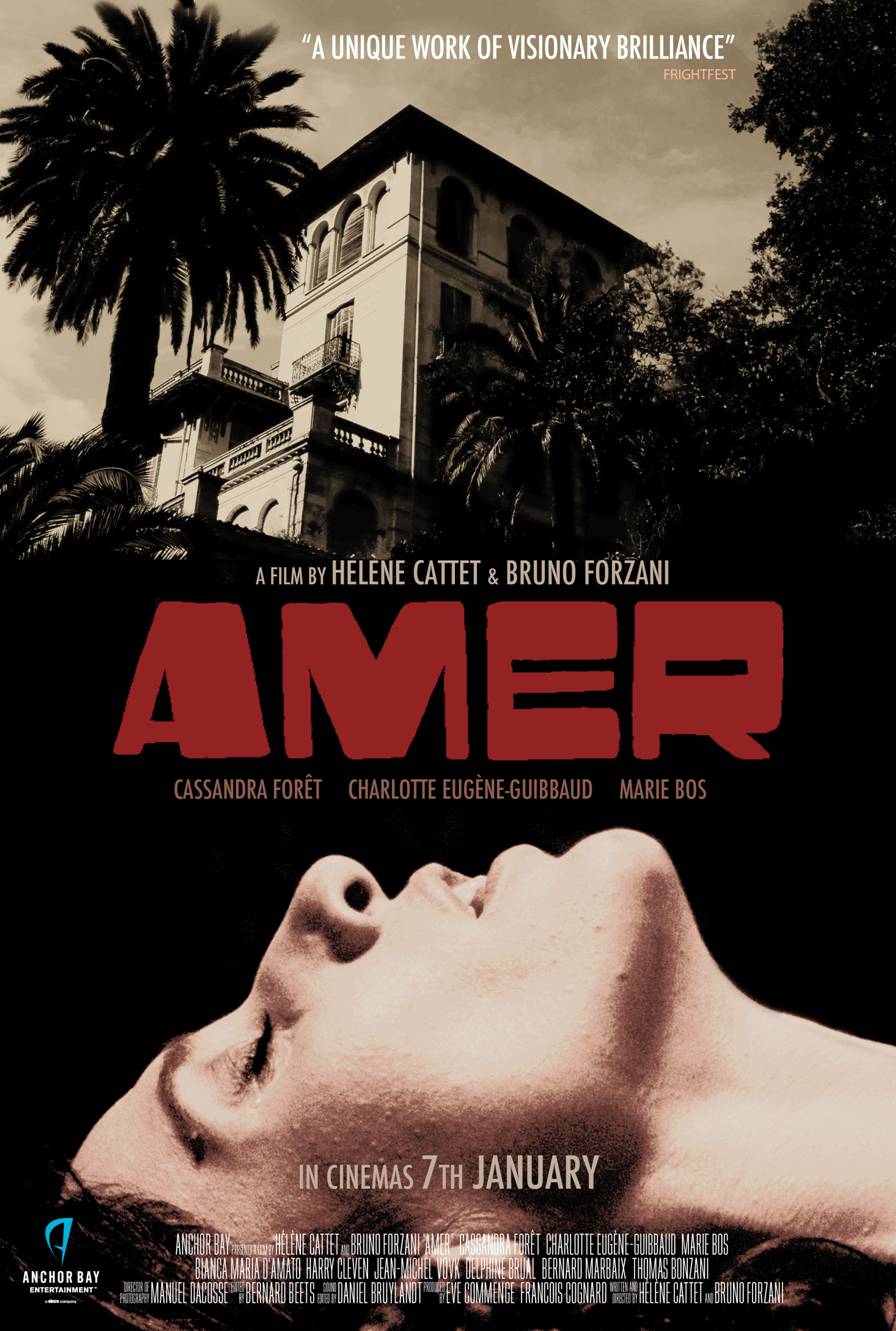
Ana (Cassandra Foret) wanders around her mother's huge forbidding mansion one afternoon while the rest of the family prepares for grandfather's funeral. Her strict mother (Bianca Maria D'Amato) berates her and sends her to her room, where she witnesses a figure shrouded in black quickly exiting into the adjoining room.
Ana continues to explore the house as all goes quiet downstairs, and stumbles upon her grandfather's corpse, laid up on a bed awaiting its final ceremony.
This first snapshot of the troubled Ana's life, as a child, reveals not only her first experience of death but also - and just as crucially - sex. The scene where Ana discovers her mother and her lover fucking is a pivotal moment in the developing young woman's fragile psyche.
Pocket watches, dead birds, curious gatherings of crystals beneath beds, crucifixes ... the first of AMER's three segments is rich with symbolism and minute details which only truly start to add up on second and third viewings. There's more going on here than just beautifully composed set pieces.
By the time the screen has turned blood-red and Ana is being chased into darkened corridors by her own sexual awakening, we're in the midst of a full-on homage to SUSPIRIA. And it's executed perfectly. What makes it work even better is that, thematically, the film has more affinity with the coming-of-age anxieties of Czech classic VALERIE AND HER WEEK OF WONDERS.
This last point is reinforced in AMER's second segment, which finds Ana (now played by Charlotte Eugene Guibeaud) as a frisky adolescent. Embracing her own sensuality with sexy abandon, she is still dominated by her steely-eyed mother.
At least, to begin with. But, as they walk through the luscious Belgian countryside on a summer's day, Ana becomes aware of the male eyes looking in her direction and eventually flees from her mother to flirt with the dangers of lust.
Oddly, because nothing of great interest occurs in this mid-section, each scene is tightly framed and tense. A sense of threat is ever-present, even if it is ultimately the threat of sexual intimacy - something still, presumably, new to this teenaged Ana. Freudian horror and gorgeous cinematography keep this second segment ticking over nicely.
Some of the editing and framing in this segment is clearly a tribute to Lucio Fulci (tight close-ups on characters' eyes being one dead giveaway). The overriding feel of this section though is a very arthouse one. The whole film is incredibly artistic, but this section more than the other two relies on languid pauses and much expression to get its points across.
In the final segment of the film, Ana (Marie Bos) is a slightly unhinged adult (the title translates as "bitter"). She returns to her family home which is now abandoned, in a bid to confront the demons from her youth. And confront them, she does ...
This final 40 minutes begins with more stunning attention to detail among the sun-kissed photography, and plays on Ana's heightened psychosexual hang-ups - upping the ante by way of sequences that echo TENEBRAE before building to a tremendous, unexpected finale.
There can be no denying that AMER is a fantastically executed film, a visual triumph from beginning to end. If you see a better-looking horror film this year, I'll be amazed. Each frame is expertly considered, every close-up is relevant and the music never fails to apply perfectly to its subject. The moods and atmospheres evoked throughout are stunning.
But it's not all just arty-fartiness with nods and winks to 70s Italian cinema. For all that AMER is an anaesthetic treasure - imagine Argento at his peak - it would still be tedious if all it did was look pretty for 87 minutes. Thankfully, the themes of guilt, repression, lust and loss elevate this into something that is also affecting and thought provoking. It's also successfully haunting too, and pretty fucking creepy at times.
The opening moments of AMER will immediately delight genre fans with its use of split-screen foreshadowing events from the film while classic giallo strains fill the ears. Indeed the music of the film, pilfering from the likes of Ennio Morricone and Bruno Nicolai will endear itself to fans of gialli everywhere.
But, aside from the score and a few obvious motifs employed occasionally throughout the film, AMER is not the big giallo revivalist picture that some reviews have suggested. While the likes of Argento and Bava have had an undeniable influence on co-writers/co-directors Helene Cattet and Bruno Forzani, the aforementioned VALERIE was the one film I came away with the most in my head.
It's great to see Anchor Bay Entertainment releasing new genre titles, especially when they come as highly recommended as this.
Amer is released by Anchor Bay Films and will open at London's ICA cinema on 7th January 2011.
Review by Stu Willis
| Released by Anchor Bay Films |
| Rated 18 |